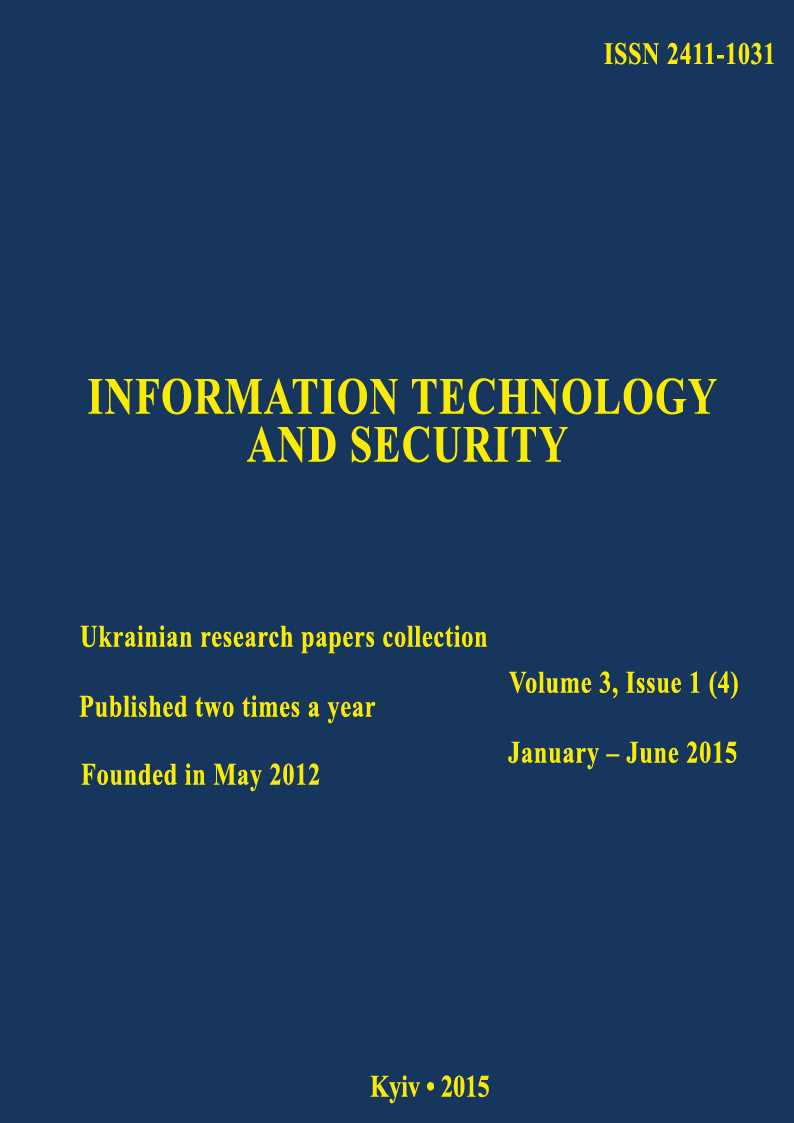Application of cloud technologies in constructing situation management systems
DOI:
https://doi.org/10.20535/2411-1031.2015.3.1.57679Abstract
The issues of multipurpose situation management systems design and organization with using of cloud computing principles are discussed in the paper. The features of development and effective exploitation such systems were analyzed. And the classification of corporate applications from functional point of view was proposed.
Keywords: situation management systems, information service, cloud computing.
References
Sääksjärvi, M., Lassila, A., Nordström, H. (2005), Evaluating the Software as a Service Business Model: from CPU Time-Sharing to Online Innovation Sharing, IADIS International Conference e-Society, pp. 177-186.
Mell, P., Grance, T. (2011), The NIST Definition of Cloud Computing, available at : http://csrc.nist.gov/publications/nistpubs/800-145/SP800-145.pdf (accessed 10 January 2015).
Hawkins, J. M. (2010), Information Technology As-A-Service (ITaaS) With VMware Private Cloud, available at : http://ezinearticles.com/?Information-Technology-As-A-Service-%28ITaaS%29-With-VMware-Private-Cloud&id=4123943 (accessed: 10 January 2015).
Barwise, J., Perry, J. (1980), The Situation Underground, Stanford Working Papers in Semantics, Stanford Cognitive Science Group, Stanford, Vol. 1, Section D. – pp. 1-55.
Jakobson, G., Buford, J., Lewis L. (2007), Situation Management: Basic Concepts and Approaches, Information Fusion and Geographic Information Systems, Springer, Heidelberg, Vol. XIV, pp. 18-33. – ISBN: 978-3-540-37628-6.
Morozov, A.A., Kuzmenko, G.E. (2008), The Way From CAMS to Situation Centers [Put ot ASUP k Situatcionnym tcentram], Mathematical Machines and Systems, No. 3, pp. 82-107.
Kovalenko, O.E. (2013), The Architecture of Services of Situation Centers Organizational Maintenance [Arkhitektura servisiv orhanizatsiinoho zabezpechennia sytuatsiinoho tsentru] // Decision Support Systems. Theory and Practice: Proceedings of 9th Distant Scientific and Practice Conference with International Participation, Kyiv, June 3, 2013, pp. 60-63.
Youseff, L., Butrico, M., Silva, D. (2008), Toward a unified ontology of cloud computing, Grid Computing Environments Workshop (GCE'08), IEEE, pp. 1-10. – ISBN 9 78-1-4244-2860-1.
Cloud Taxonomy, available at : http://cloudtaxonomy.opencrowd.com/taxonomy (accessed 10 January 2015).
OpenNebula – official site, available at : http://opennebula.org (accessed 10 January 2015).
ContolTier Documentation, available at : http://doc36.controltier.org/wiki/Main_Page (accessed 10 January 2015).
VMware VCloud-Director, available at : http://www.vmware.com/products/overview.html (accessed 10 January 2015).
EUCALYPTUS official site, available at : http://www.eucalyptus.com (accessed 10 January 2015).
Downloads
Published
How to Cite
Issue
Section
License
Copyright (c) 2020 Collection "Information technology and security"

This work is licensed under a Creative Commons Attribution 4.0 International License.
The authors that are published in this collection, agree to the following terms:
- The authors reserve the right to authorship of their work and pass the collection right of first publication this work is licensed under the Creative Commons Attribution License, which allows others to freely distribute the published work with the obligatory reference to the authors of the original work and the first publication of the work in this collection.
- The authors have the right to conclude an agreement on exclusive distribution of the work in the form in which it was published this anthology (for example, to place the work in a digital repository institution or to publish in the structure of the monograph), provided that references to the first publication of the work in this collection.
- Policy of the journal allows and encourages the placement of authors on the Internet (for example, in storage facilities or on personal web sites) the manuscript of the work, prior to the submission of the manuscript to the editor, and during its editorial processing, as it contributes to productive scientific discussion and positive effect on the efficiency and dynamics of citations of published work (see The Effect of Open Access).

